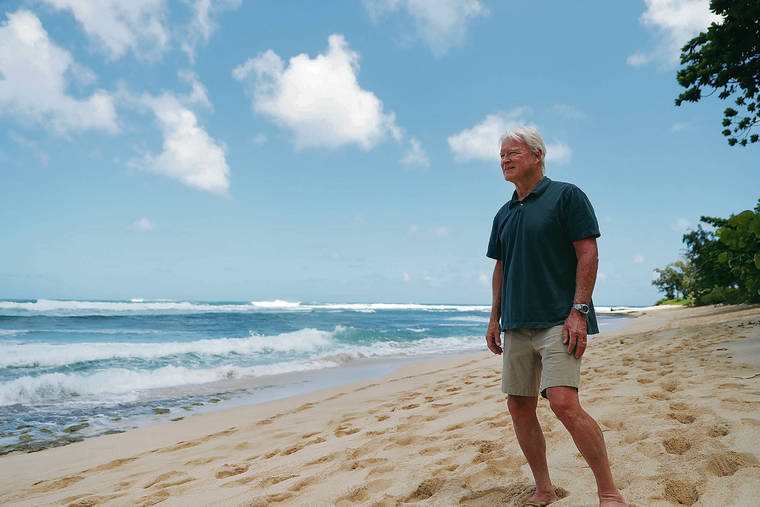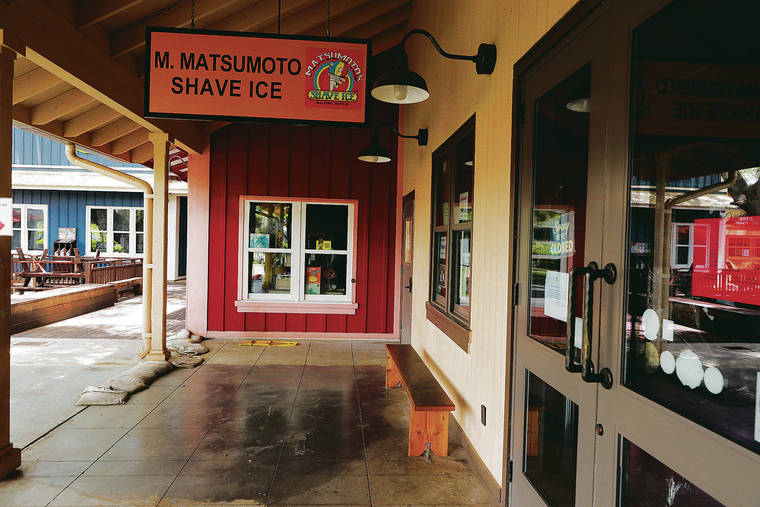COVID-19 pause gives Hawaii a chance to restore tourism balance


JAMM AQUINO / JAQUINO@STARADVERTISER.COM
North Shore resident and longtime surfer Randy Rarick stood on an empty Sunset Beach on Saturday. “It’s just incredible how pleasant it is with so fewer tourists than normal,” Rarick said.

JAMM AQUINO / JAQUINO@STARADVERTISER.COM
Normally bustling with tourists, longtime North Shore business Matsumoto Shave Ice remained closed Saturday due to the COVID-19 pandemic.



Randy Rarick, former director of the Triple Crown of Surfing, said the absence of visitors on Oahu’s North Shore since the COVID-19 lockdown Opens in a new tab has really driven home how much Hawaii needed a pause after hosting more than 10 million visitors last year.
Gone are the rental cars that backed up for miles turning Rarick’s 10-mile grocery commute into a 45-minute hassle. Laniakea Beach, known as a spot to see Hawaiian green sea turtles, isn’t a pedestrian safety hazard anymore. Iconic Matsumoto Shave Ice is closed along with other popular tourist haunts. The beaches are empty, and it’s mainly locals who are surfing swells.
>> PHOTOS: Coronavirus pandemic slows tourism to Oahu’s North Shore Opens in a new tab
“It’s just incredible how pleasant it is with so fewer tourists than normal. We’ve got 10 million-plus tourists a year and basically, I think it’s too many,” Rarick said. “I know we can’t keep it the way it is now. We have to stimulate the economy and get people back to work. But before Hawaii reopens to tourism, we need to consider where to draw the line.”
The collapse of the tourism industry has given the state a clean slate much like Kauai had when flooding closed its North Shore for over a year. The June reopening of Kuhio Highway into Kauai’s North Shore was timed to align with new rules to limit tourism at Haena State Park, where visitation was reduced to a 900 daily limit.
Rarick said he thinks 7 million visitors is a healthy limit for the state. That number would take Hawaii’s tourism levels back to about 1989, when 6.5 million visitors brought in $9 billion, the equivalent of $18.3 billion in 2019 dollars. In comparison, it took 10.4 million visitors in 2019 to reach $17.75 billion in spending.
Don't miss out on what's happening!
Stay in touch with breaking news, as it happens, conveniently in your email inbox. It's FREE!
That math has left some Hawaii residents feeling shortchanged.
The COVID-19-related collapse of Hawaii’s tourism could lead to greater public appreciation for an industry that supported more than 200,000 jobs last year. But that’s going to take time.
It was only February when Omnitrak reported to Hawaii Tourism Authority that the state’s latest resident sentiment survey had fallen to it’s lowest level. Only 58% of Hawaii residents, surveyed by Omnitrak between Sept. 27 and Nov. 14, agreed that “Tourism has brought more benefits than problems.”
Respondents beefed that tourism caused traffic and overcrowding; moreover, they said it increased Hawaii’s cost of living and damaged the environment. Tourism’s influence on health, including the possibility that it could spread viruses and create potential epidemics, also was on the list of complaints.
Even before the latest survey, the HTA already had adopted an aggressive strategic plan that emphasized tourism sustainability over all else. Implementing it was expected to be difficult given the tourism load that Hawaii historically has carried. Now, the challenge will be holding that long-term vision in the face of overwhelming short-term needs.
“We are in a very challenging situation right now, but you don’t turn away from your strategic plan. We still need to invest in the environment, the culture and the community whether business is bad or good,” said HTA President and CEO Chris Tatum.
The HTA has opposed illegal vacation rentals. But it’s championed greater investment in culture, natural resources and community priorities.
Since a mandatory 14-day self-quarantine was implemented on March 26, Hawaii’s visitor count has dropped to 3,762. In contrast, last April, 856,250 visitors came to Hawaii.
Hawaii’s current tourism reality provides a “great opportunity to rethink our carrying capacity and our overtourism issues,” said Omnitrak president and chief operating officer Chris Kam.
“Destinations are talking about the timing of when to open up and how residents will feel about it,” Kam said. “We’ve been encouraging them to consider steps that will allow them to better manage tourism. People also are going to want reassurances that it’s safe to travel and that their health is protected.”
What that will look like, no one knows. But Kam said he’s heard talk of requiring future visitors to complete pre-quarantines as well as undergo COVID-19 testing.
“We could take the Hanauma Bay managed tourism model and instead of just applying it to hiking trails, apply it to the whole state,” Kam said. “Our isolation lets us manage the number of people that come here and the timing.”
Celeste Connors, Hawaii Green Growth executive director, said the COVID-19 tourism pause allows green growth to move forward, much like it did after the last financial crisis.
“We need to stabilize our economy and build a more resilient community,” Connors said.
Hawaii’s recovery in the short term must address immediate needs like getting people back to work so they can eat and taking steps to alleviate the strain on health care and social welfare, said Kalani Kaanaana, HTA director of Hawaiian cultural affairs.
But longer-term strategies need to take into account that “we had a system and by all measures, we don’t think it worked. Ten million people and the strain that put on our natural resources and communities was immense,” Kaanaana said.
“We also need to keep an eye on the long-term adaptive challenges that help us address things like climate change, food security and all of those metrics that we are looking to diversify our economy,” he said.
Connors said innovation is crucial to achieving sustainable green growth. This means reducing energy usage, improving water management, implementing cleaner production practices, safeguarding natural resources and protecting public health, she said.
“Economic growth, job creation and environmental stewardship are not a zero sum game — sustainable use of natural resources combined with environment protections can and will improve economic performance and secure a more prosperous future,” Connors said.



